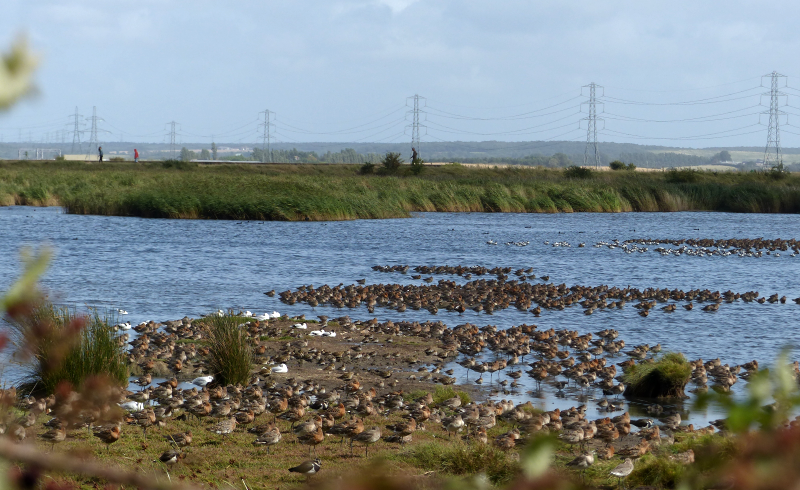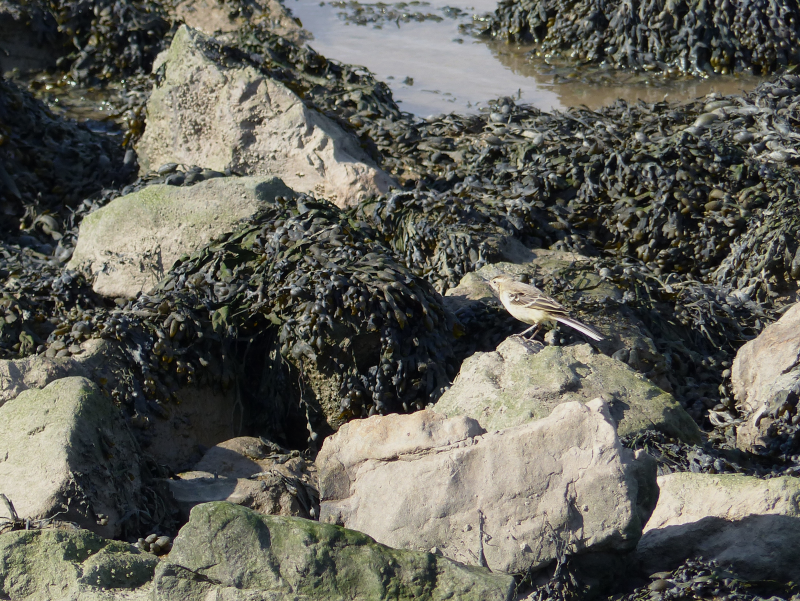Average Birding

Posted at 19:46 on December 21, 2019
Oare Marshes
Either Kent's worst or best kept secret, Oare has wader quality that verges on Slimbridge levels, and a habit of producing some excellent rarities, particularly during fall passage.
Getting there
Nearby Faversham is well served by High speed Southeastern services if approaching from London. The reserve is then:
- a good hour's walk (use the Saxon Shore Way)
- a twenty-minute cycle
- a ten-minute drive or taxi ride
Facilities
Are entirely absent, and there's not a lot of cover if you're aiming for shifty wee behind a bush.
How to do it
Before we start, here's an annotated map version of this guide, for the more geographically inclined.
Like many wetland reserves, you should aim to time your arrival at Oare with a rising tide - it will push more of the birds on to the reserve, where they are easier to see.
I remember first going to Oare some years ago and being astonished by both the number and the proximity of birds to the right of the road through the reserve. There are a few places you can park on the road which have superb views of the water (the "East Flood") and various scrapes. Partake of them if you can. If they're full (likely on a weekend) there's a capacious car park at the end of the road.

Cycle parking is restricted to whatever post/pole you can find to lock up to - there's a handrail on some steps up to the sea wall that I've used to this end a couple of times.
Once you're set - start by having a good old look at the main body of the reserve from the road. A visit during fall passage should mean the spit that extends into the water from the road is chock-a-block with Golden Plover, Dunlin, Avocet, Black-tailed Godwit and Redshank. A bit of searching should find a Ruff or two - check among the non-sleeping Godwits to the left and right of the spit.
A bit of luck and some more intensive searching as the summer starts to wane (late July to early September) might yield Spotted Redshank, Little Stint and Curlew Sandpiper (I saw four or five of the latter in August 2015 along with a summer plumage Knot; a very pleasant surprise).
In terms of where to look - in addition to the obvious mud - keep an eye on the edges of the East flood. Water Rail breed here and can be seen even in the height of summer. The edge of the spit poking out into the East flood is often a good place to find the tinier (read: scarcer) wader species, as well as a thin sandbank/mudflat that runs parallel to the road that sits almost in the centre of the East Flood.

Once you start to feel like you've seen everything from the road, head towards the Swale to start the circular path around the reserve in a clockwise direction. Along the sea wall, watch out for wagtails (of all sorts). On the extensive mud, there should also be plenty of Curlew around. During passage, inspect the curly-beaked inhabitants closely; Whimbrel turn up here quite frequently. In recent years, a returning Bonaparte's Gull has favoured this area, providing an excellent opportunity to hone your Gull skills (hint: its head is way more black than a Black-headed Gull).
The hide at the point is worth a brief visit (although you can just as easily set up next to it) - Little Ringed and Ringed Plover often turn up on the mud flats to the North of it in significant numbers. To the East, Horse Sands may be worth a quick check for seals. Across the water, the South shore of the Isle of Sheppey hosts Swale NNR; it's worth scanning above the extensive reedbed for Marsh Harrier (frequent) and Short Eared Owl (possible; I've not seen them though).
Heading inland from the hide, listen out for Bearded Reedling pinging in the reedbed to your right. If you're very patient you might manage to see one or two, mostly I just end up staring angrily at Reed Buntings, though.
When you reach the sluice, it's worth having a look at the pylons immediately South for Peregrine, and at the barges and various other perch points in the creek for Kingfisher. Take a right (so, heading West, back towards the road) after the sluice on to the final quarter of the walk.
On this last section, you might manage to find Bearded Reedling in the reedbed on your left (I haven't, but not for lack of trying). Pay a visit to the hide for completeness only; I'm not sure it offers any views of the site not better viewed from the road or the sea wall, but if you're the thorough sort, you might find a Snipe or two from it that you mightn't spot from elsewhere.
Return to the road for one last look before heading off.
Links
Kent Ornithological Society maintains a yearly sightings blog for this site which is a must read if you intend to visit. Here's the 2018 and 2017 versions.
The page on Birding for all illustrates the circular walk very well.
Eat / Drink / Stay
Have unilaterally failed to eat at The Three Mariners every time I've been, due to lack of planning or lack of company. If you're anywhere near a peak time, book in advance.